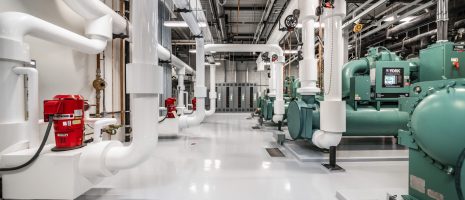Study shows link between indoor air quality and employee performance

By Dave Bodenschatz
A recent study by Harvard University revealed grim details regarding indoor air quality in work environments that, in some cases, is more polluted than the air outside.
In the Fast Company article, “Your Office Air is Making You Stupider,” author Mark Wilson explores the landmark study and some of the negative cognitive and mental health issues that can arise from poor indoor air quality in the workplace.
“The most disturbing finding was that there was a direct relationship between the amount of fine particulate matter in the air and how poorly people performed on mental tests,” Wilson writes. “The more polluted the air, the worse people performed.”
Wilson goes on to describe some possible solutions to improve air quality and overall health of building occupants. This includes reducing CO2, the use of good filtration such as MERV13 filters that can specifically target microparticles, and ensuring the building doesn’t exceed maximum design occupancy.
Identifying indoor air quality issues and determining possible solutions is just part of a much larger, holistic process for ensuring the best outcome. Many older buildings, for example, may require extensive HVAC upgrades or redesigns to conform to newer standards or to support newer equipment. It is also crucial for all adjustments to a building’s infrastructure to be based on an understanding of the space, the system design, intent, and operation. Changing system settings and sequences of operation without a good understanding of the effects on overall building operations could result in unintended consequences and poor building performance.
If you suspect your building’s indoor air quality is subpar, the best place to start is with an overall system analysis based on these considerations and followed up with solutions that meet your needs, budget, and comply with ASHRAE guidelines. By doing so you can feel confident you are taking the right steps to help ensure occupant well-being and building operational integrity.











